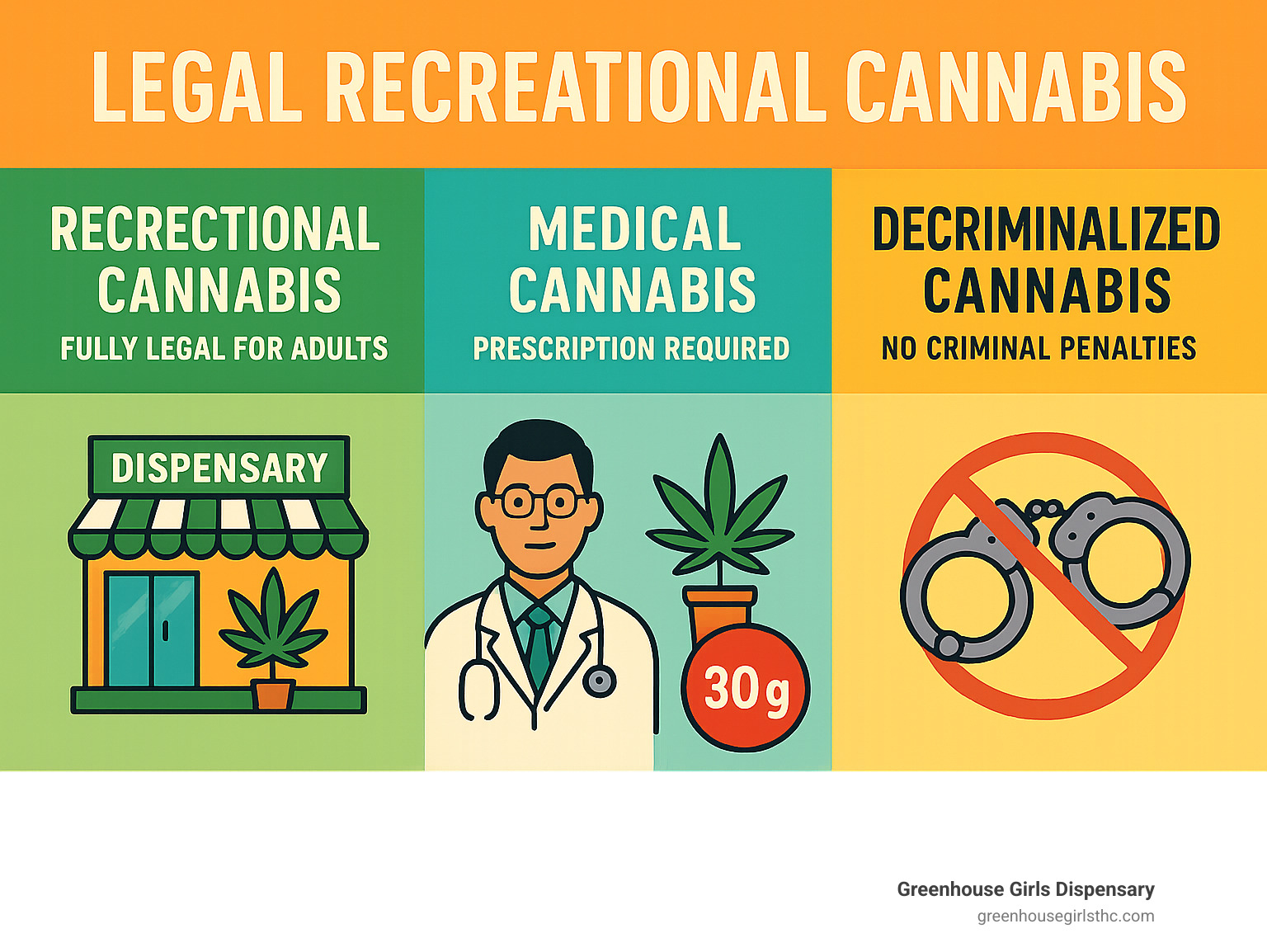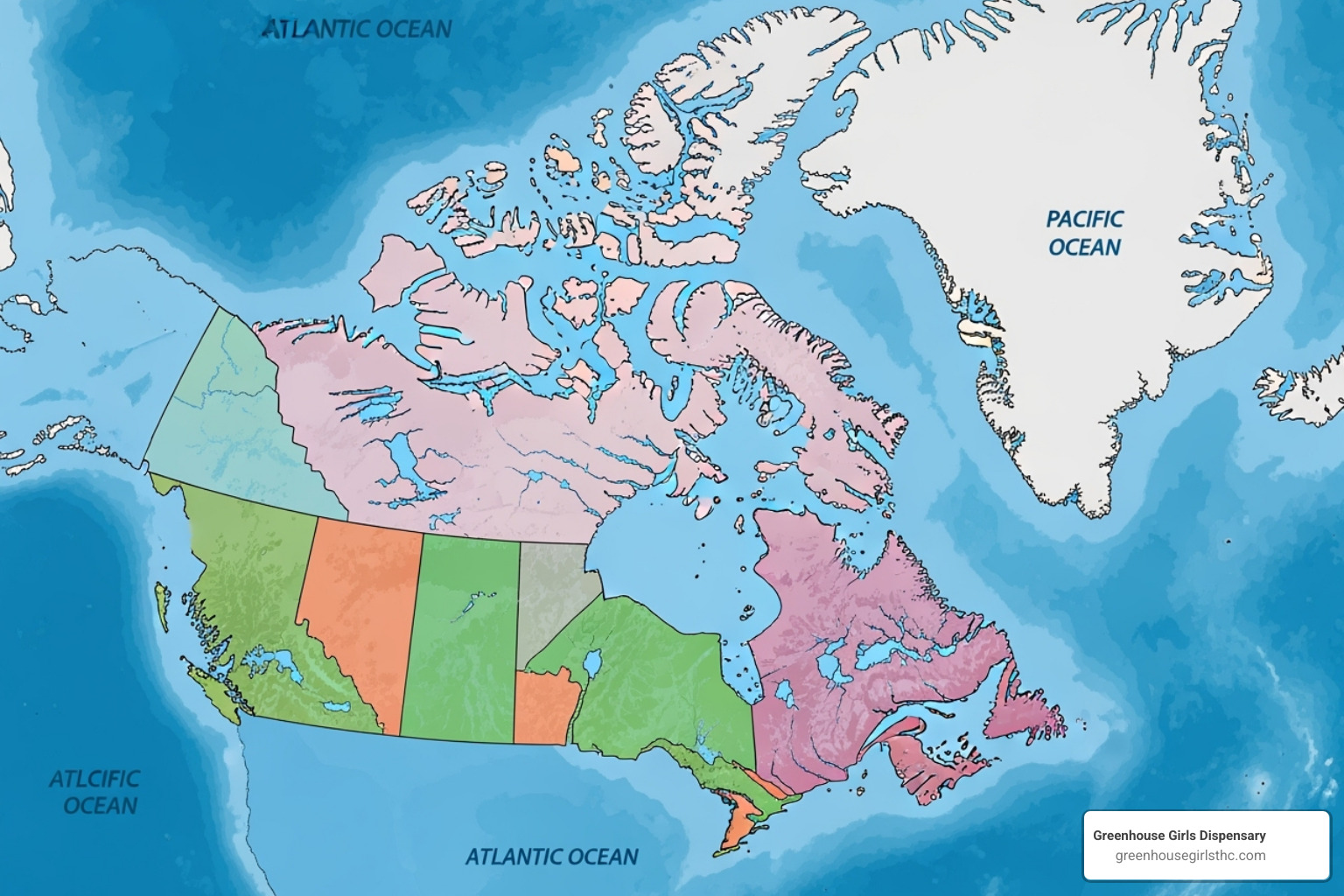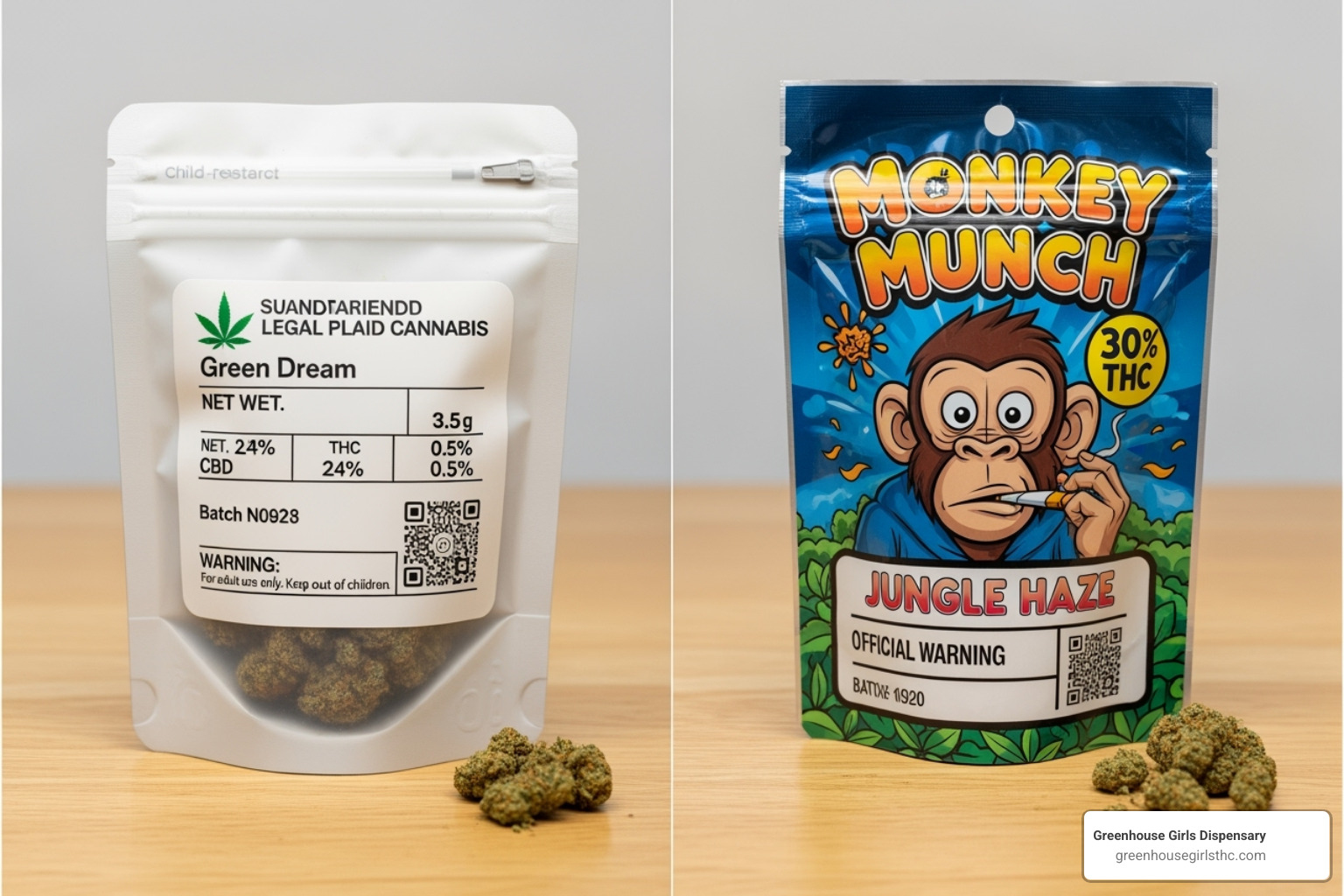
The Green Light: Understanding Legal Recreational Cannabis Across the Globe
Why Legal Recreational Cannabis Is Reshaping Laws Worldwide
Legal recreational cannabis is a fast-growing policy change globally. Here's what you need to know about its legality:
- Fully Legal: Canada, Uruguay, and several U.S. states allow adult recreational use
- Medical Only: Many countries permit cannabis for medical purposes with prescriptions
- Decriminalized: Some regions have removed criminal penalties for personal use
- Illegal: Still prohibited in most countries worldwide
- Legal Age: Typically 18-21 years old where recreational use is allowed
- Possession Limits: Usually 30 grams of dried cannabis or equivalent in public
The movement toward legal recreational cannabis gained momentum when Canada became the second country to fully legalize it on October 17, 2018. It was a complete shift, treating cannabis as a public health matter rather than a criminal issue.
Canada's Cannabis Act had three main goals: keep cannabis out of the hands of youth, keep profits out of the pockets of criminals, and protect public health and safety. The results speak for themselves: by 2020, Canadians were spending more on legal cannabis than illegal products, and cannabis-related arrests dropped dramatically.
Canada isn't alone in this green revolution. Countries and states worldwide are watching these results and creating their own frameworks for legal recreational cannabis. Each place has its own rules about where you can buy it, how much you can possess, and where you can use it.
I'm Selena Jochumsen, and through my work with Greenhouse Girls and as a Hemp Committee member of the National Cannabis Industry Association, I've seen how legal recreational cannabis policies impact businesses and consumers. My experience has shown me how proper regulation creates safer, more transparent markets.
Why this matters in Florida and the U.S.: Adult-use cannabis remains illegal in Florida, but federally legal, hemp-derived alternatives are available. Greenhouse Girls operates from Palm Harbor and Oldsmar, Florida, offering lab-tested THCa flower and Delta-9 gummies with nationwide shipping—giving adults a compliant way to access cannabis-like products while state laws evolve.

Canada's Framework for Legal Recreational Cannabis
Canada is a pivotal case study for legal recreational cannabis. On October 17, 2018, it became the second country to fully legalize cannabis for adult use. This move was the culmination of extensive research to dismantle the illicit market and prioritize public welfare.
The cornerstone is the Cannabis Act, a federal law controlling cannabis production, distribution, sale, and possession. While the federal government sets overarching rules, provinces and territories oversee distribution and sales. This allows a custom approach that respects regional differences while maintaining national standards.
One primary aim was to reduce the black market. The results are encouraging. By Q3 2020, Canadian spending on black market cannabis dropped by nearly half since legalization, showing the power of a regulated market. You can track the law's journey through The Cannabis Act in the Senate.
The Goals and Rules of the Cannabis Act
The Cannabis Act has several crucial goals:
- Keep cannabis out of the hands of youth: Protecting young people is a top priority.
- Keep profits out of the pockets of criminals: A legal market starves criminal organizations of revenue.
- Protect public health and safety: This involves regulating legal cannabis for quality, potency, and safety, and providing public education.
For adults 18 or older (age varies by province), several activities became legal:
- Possessing up to 30 grams of legal cannabis (or equivalent) in public.
- Sharing up to 30 grams of legal cannabis with other adults.
- Purchasing cannabis from a provincially or territorially licensed retailer, including online.
- Growing up to four cannabis plants per residence for personal use (Quebec and Manitoba opted out).
- Making cannabis products at home, without using dangerous organic solvents.
These activities shifted cannabis into a controlled, legal market, fostering responsible consumption and reducing the harms of prohibition.
Possession Limits and Cannabis Equivalents
Understanding possession limits is key in Canada. The limits are based on dried cannabis, with equivalents for other forms:
- One (1) gram of dried cannabis is equal to:
- 5 grams of fresh cannabis
- 15 grams of edible product
- 70 grams of liquid product
- 0.25 grams of concentrates (solid or liquid)
- 1 cannabis plant seed
This system allows flexibility while capping public possession. For example, the 30-gram limit on dried cannabis is equivalent to 450 grams of edibles.
Adults 18 or older can possess up to 30 grams of legal cannabis (or equivalent) in public. While the federal home cultivation limit is four plants, Quebec has a home possession limit of 150 grams of dried cannabis per household. For more details, explore the Cannabis Act.
Protecting Youth and Penalties for Offences
Protecting youth is a cornerstone of Canada's legal recreational cannabis framework. The Cannabis Act has stringent measures to prevent youth access and deter its promotion to them.
Age Restrictions: No one may sell or provide cannabis to anyone under 18. Violating this strict rule carries severe penalties. While the federal minimum age is 18, provinces can set it higher. For instance, Alberta's legal age is 18, Quebec's is 21, and most others have set it at 19.
Prohibited Promotions and Packaging: To prevent cannabis from appealing to youth, the Act prohibits:
- Products that appeal to youth.
- Packaging or labelling that appeals to youth (e.g., cartoons, bright colors). All legal products must have plain packaging.
- Selling via self-service displays or vending machines.
- Promoting cannabis, except in limited circumstances where youth cannot see it (e.g., age-gated websites).
Penalties for Violations: Penalties for violating cannabis laws are significant deterrents:
- Providing cannabis to youth: Up to 14 years in jail.
- Promoting cannabis to youth: A fine up to $5 million or 3 years in jail.
- Illegal distribution or sale: Penalties range from tickets to up to 14 years in jail.
- Possession over the limit: Can lead to tickets or up to five years less a day in jail.
- Producing cannabis beyond personal limits: Up to 14 years in jail.
- Taking cannabis across international borders: Strictly illegal with severe penalties.
These penalties underscore Canada's commitment to responsible control and protecting vulnerable populations.
A Coast-to-Coast Look: Cannabis Laws in Canadian Provinces

While the federal Cannabis Act sets the foundation, each province and territory writes its own rules for legal recreational cannabis. This means rules for age, home cultivation, and public consumption can vary significantly between provinces.
This smart design lets each region adapt legal recreational cannabis laws to fit their communities and values. This system respects local differences under a federal safety umbrella, but you must know the local rules wherever you go.
Comparing Provincial Cannabis Regulations
Here is how four major provinces handle key aspects of legal recreational cannabis:
| Feature | Alberta | British Columbia (BC) | Quebec | Ontario |
|---|---|---|---|---|
| Legal Age | 18 years old | 19 years old | 21 years old | 19 years old |
| Where to Buy | Private licensed in-person and online stores | Government-operated in-person and online stores or private licensed in-person stores | Government-operated in-person and online stores (SQDC) | Private licensed in-person stores or government-operated online store (OCS) |
| Home Grow Rules | Yes (up to 4 plants per residence) | Yes (up to 4 plants per residence) | No (illegal to grow at home) | Yes (up to 4 plants per residence) |
| Public Consumption | Generally allowed where tobacco is, with municipal restrictions | Generally allowed where tobacco is, with local restrictions | Illegal in all public places | Generally allowed where tobacco is, with municipal restrictions |
Alberta has a relaxed approach: legal age is 18 with private retail and home growing. Quebec is strictest: legal age is 21, with no home growing or public consumption. British Columbia and Ontario are in the middle, with a legal age of 19.
The retail models also vary. Quebec uses government-run SQDC stores, while Alberta allows private businesses. Ontario has a hybrid model: private in-person stores and a government-run online store (OCS).
Where to Buy Legal Recreational Cannabis
Finding legal cannabis in Canada depends on the province, but every jurisdiction provides options. Some provinces use government-controlled stores, while others allow private retailers.
Government-operated stores are used in Quebec (SQDC) and New Brunswick (Cannabis NB). Private licensed retailers operate in Alberta, Ontario, Manitoba, and Saskatchewan, creating a diverse retail landscape.
Online sales are a backbone of distribution, especially in remote areas. Most provinces offer online ordering through government or private platforms.
Crucially, every legal cannabis product in Canada must have an excise stamp. This unique provincial stamp has security features to prevent counterfeiting. If there's no stamp, don't buy it.
Always use official provincial retail resources: Alberta has a licensed retailer search, British Columbia offers store locations and online shopping, Manitoba has a store directory, New Brunswick lists retail locations with online ordering, Newfoundland and Labrador provides a store locator and online store, Northwest Territories shows where to buy with online access, Nova Scotia has store listings and online sales, Nunavut lists current retailers, Ontario tracks retail applications with online ordering, Prince Edward Island provides contact info and online shopping, Quebec lists SQDC locations with online access, Saskatchewan maintains authorized seller lists, and Yukon offers general cannabis information.
A Consumer's Guide to the Legal Market

Navigating the legal recreational cannabis market isn't complicated. Once you know what to look for, it becomes second nature. The legal market offers what the black market cannot: guaranteed safety, consistent quality, and peace of mind.
When you buy legal cannabis, you get lab-tested products grown under strict regulations and packaged for safety. It's the difference between a health risk and an informed choice.
Identifying Legal Recreational Cannabis Products and Retailers
Legal cannabis stores should feel reassuring. Legal recreational cannabis products have several telltale signs that set them apart from illegal ones.
Every legitimate product displays the standardized cannabis symbol (a red and white cannabis leaf), your guarantee that it meets Health Canada's standards.
The packaging itself signals safety. Child-resistant plain packaging looks boring, but that's the point. It lacks flashy designs that appeal to kids and includes mandatory health warnings from Health Canada.
The real game-changer is the excise stamp. This small, colored stamp proves the product is from a licensed producer and taxes are paid. No stamp? Walk away.
Licensed retailers always verify your age, accept normal payment methods like debit and credit, and display their government-issued license.
A key rule: legal retailers can't ship recreational cannabis across provincial borders. Anyone offering to mail cannabis from another province is operating illegally.
Illegal retailers might offer referral bonuses, accept only e-transfers, or use candy-like packaging. When in doubt, check the current status of cannabis laws.
Navigating Edibles, Extracts, and Impaired Driving Laws
On October 17, 2019, legal edibles and concentrates joined the market, including gummies, vapes, and chocolates with the same safety guarantees.
The government learned from others' mistakes when setting edible regulations. Each package of legal edibles has a maximum of 10 milligrams of THC. This low limit is designed to prevent the emergency room visits seen elsewhere during early legalization.
This conservative approach is debated. The Cannabis Council of Canada argues for a 100mg limit to better compete with illegal products. For now, 10mg remains the law, likely preventing many uncomfortable experiences.
Now for a serious topic: impaired driving. Legalization brought tougher impaired driving laws. Police use roadside saliva screening devices and sobriety tests to detect cannabis impairment.
Penalties are severe: license suspension, vehicle impoundment, fines, criminal charges, and jail time. The message is clear: if you consume cannabis, don't drive. This applies to cannabis, alcohol, and other drugs.
Cannabis, Travel, and Past Records
This is where many people make costly mistakes. Legal recreational cannabis in Canada is fine, but international borders change everything.
Cannabis and international travel is simple: don't do it. You cannot bring cannabis into or out of Canada, even if your destination has legal cannabis. Consequences range from denied entry to fines and jail.
Border officers can deny entry to anyone admitting to past cannabis use or industry involvement, even if legal. The safest approach is to leave cannabis at home. For details, check Cannabis and international travel.
On a positive note, Canada addressed past injustices. If you have a past possession charge from before legalization, you may be eligible for expedited, no-fee record suspensions. These cannabis pardons can remove barriers to employment and housing, acknowledging that people shouldn't pay for something no longer a crime.
Frequently Asked Questions about Legal Cannabis
It's understandable to have questions about legal recreational cannabis. The landscape has changed quickly. Here are some common questions.
How does legalization impact the black market?
This is a key question. A main reason for legalization was to keep profits out of the pockets of criminals. How is that working out?
Initially, legal cannabis struggled to compete on price. In October 2019, legal cannabis cost about $10.23 per gram versus $5.59 on the black market.
As the legal market matured and more stores opened, things shifted. By the third quarter of 2020, a huge milestone was reached: Canadians were spending more on legal cannabis than illegal products.
The amount spent on black market cannabis dropped by nearly half compared to before legalization. This shows people are choosing safe, regulated products.
The goal is to eliminate the illicit market. While not there yet, the progress is impressive.
What are the regulations for advertising legal cannabis?
Cannabis advertising rules are in a different league. Canada takes a super strict approach to promotion, prioritizing youth protection.
You won't see cannabis commercials or billboards. The Cannabis Act prohibits any promotion that could appeal to youth.
Companies cannot use testimonials or endorsements, nor can they present cannabis in a glamorous or exciting way. No lifestyle marketing or event sponsorships are allowed.
Advertising is limited to inside licensed retailers and on age-gated websites. Even then, brand-preference promotion (claiming one brand is better than another) is banned.
These restrictions are designed to keep cannabis away from youth while allowing adults to make informed choices.
Are there different rules for medical cannabis?
Yes. Medical and legal recreational cannabis operate under different rules.
Medical cannabis follows the Access to Cannabis for Medical Purposes Regulations (ACMPR), separate from the recreational Cannabis Act. You still need medical authorization from a healthcare practitioner.
The medical system allows for key differences. Patients can often access higher quantities and specific products not available recreationally. Possession and cultivation rules are also custom to medical needs.
For the most current information, check Health Canada's website.
Conclusion
Canada's journey with legal recreational cannabis shows how thoughtful policy can reshape an industry. The 2018 experiment has evolved into a system balancing public health, youth protection, and justice reform. The results are clear: black market spending has dropped, arrests have plummeted, and consumers have access to safe, lab-tested products.
Canada's approach is flexible. The federal Cannabis Act provides a foundation, but provinces adapt regulations to their needs. This proves that legal recreational cannabis isn't a one-size-fits-all solution.
The system isn't perfect. Challenges remain with pricing, THC limits in edibles, and impaired driving enforcement. These are growing pains in building a new, regulated market that prioritizes safety over prohibition.
As others watch Canada, these laws will likely continue to evolve. The goal is to create safer communities while respecting adult choice.
For those in places like Florida, where laws are still developing, you don't have to wait. At Greenhouse Girls, our mission is to provide federally legal alternatives that meet the highest safety standards. Our THCa flower and Delta-9 gummies are sourced from small family farms, lab-tested, and shipped nationwide from our Palm Harbor and Oldsmar locations.
We believe everyone deserves access to quality, legal cannabis products. That's why we're offering a free Baby Jay for new customers—so you can experience the difference quality control makes.
The future of cannabis is bright, regulated, and focused on consumer safety. We're excited to be part of that journey with you.

